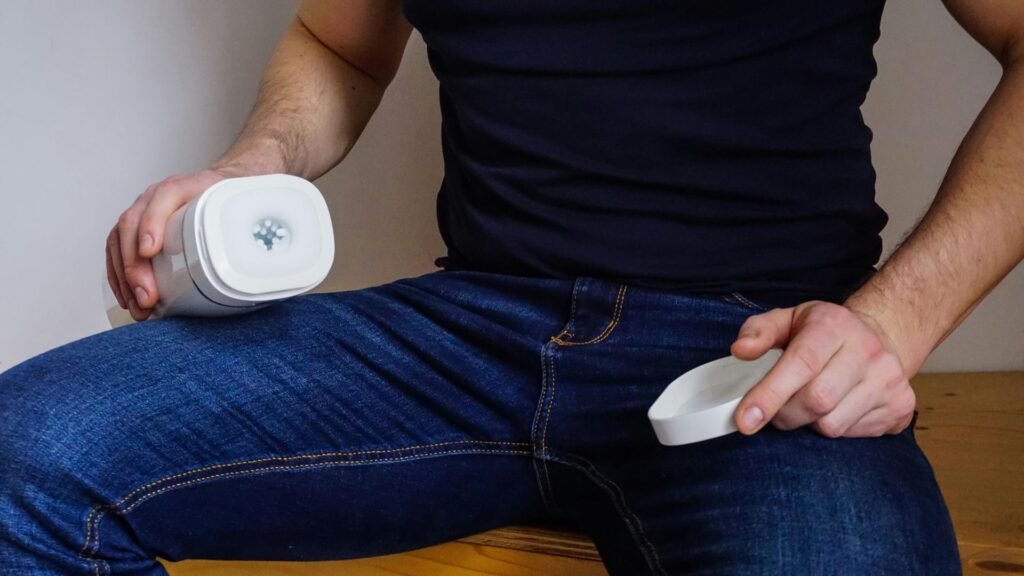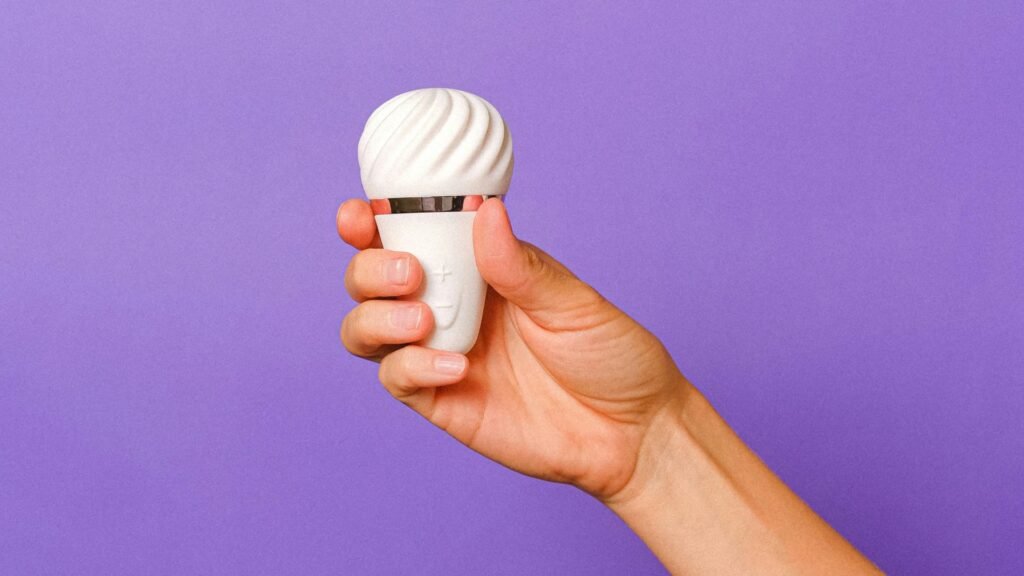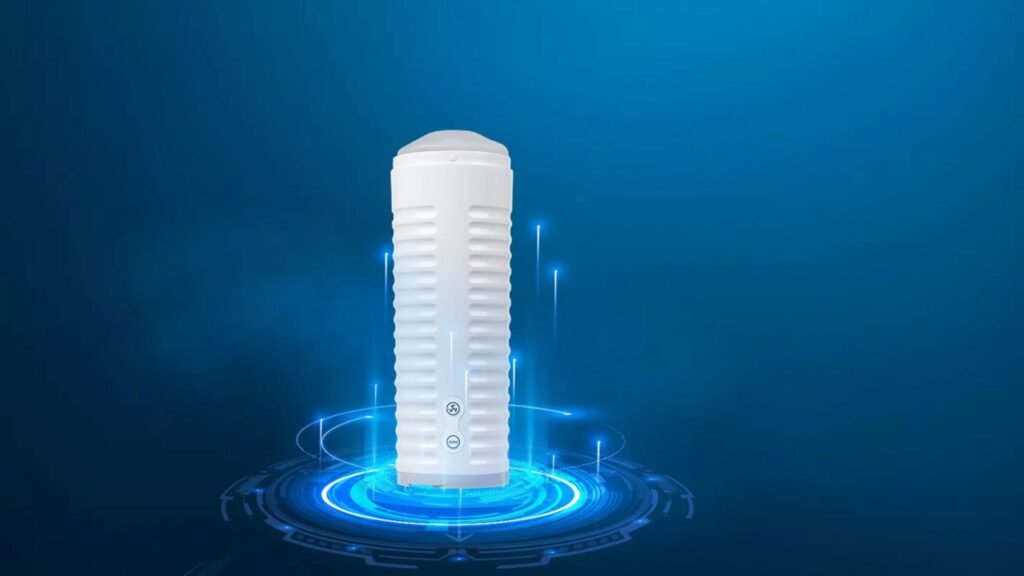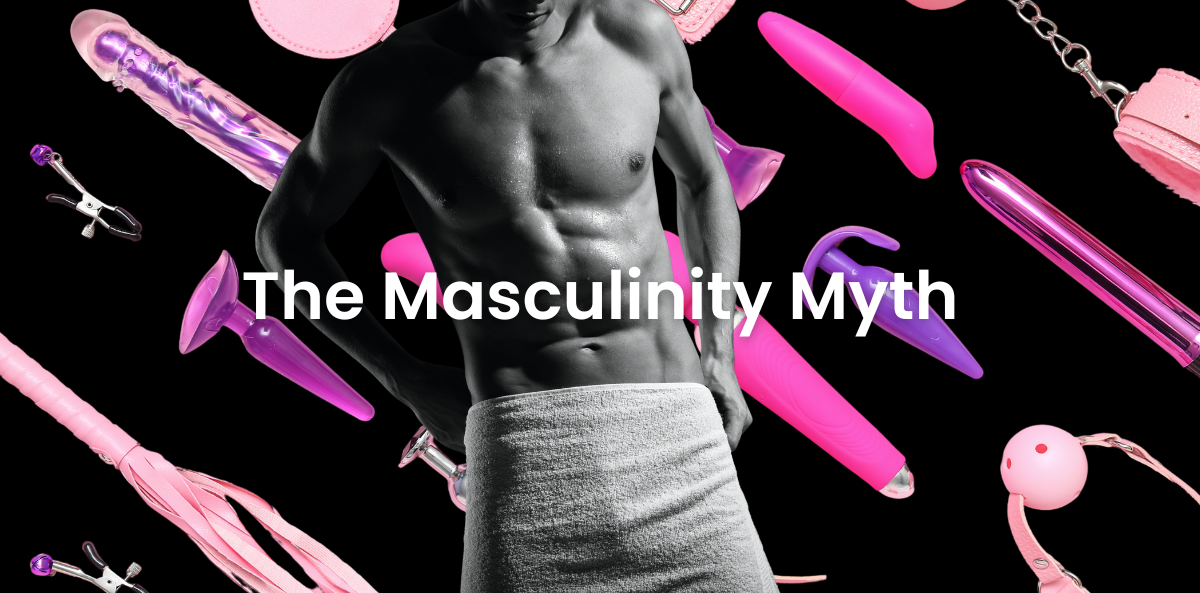A Deep Dive into Masculinity, Stigma, and Male Sexual Wellness
In India, conversations about sex and pleasure are slowly emerging from the shadows, yet one critical aspect remains neglected—male sexual wellness. While female-focused sex toys discreetly enter mainstream e-commerce platforms, male pleasure products are still taboo. Why do Indian men resist using sex toys? What does this reveal about societal masculinity norms? And how can embracing male sexual wellness transform India’s dating and relationship culture?
This deep dive explores:
- The psychological and cultural stigma around male masturbation
- Why sex toys for men in India are underdeveloped and poorly marketed
- How toxic masculinity shapes sexual behavior
- The potential benefits of normalizing male pleasure for relationships
- The way forward—legal, social, and commercial changes needed
- Interviews with sexologists and therapists
- Anonymous case studies of Indian men who use sex toys
- How Other Conservative Societies Handle Male Sex Toys
- Buyer’s Guide for Indian Men
- FAQs
1. The Stigma Around Male Self-Pleasure in India
Religious and Cultural Conditioning
Historically, Indian society has viewed masturbation with suspicion:
- Ayurvedic myths suggest semen retention boosts vitality, while “spilling seed” weakens men.
- Religious texts (e.g., Dharmashastras) indirectly condemn self-pleasure as a moral failing.
- Bollywood and pop culture often mock male masturbation (e.g., Delhi Belly, Pyaar Ka Punchnama), reinforcing shame.
A 2019 study in the Indian Journal of Psychological Medicine found:
- 65% of Indian men believe masturbation is “harmful” or “sinful.”
- 72% feel guilt or anxiety after self-pleasure.
- Only 18% had ever discussed it openly, even with friends.
Toxic Masculinity and the “Real Man” Myth
Indian masculinity is tied to:
✔ Sexual conquest – A “real man” satisfies women, not himself.
✔ Natural virility – Needing a toy implies inadequacy.
✔ Silent endurance – Men shouldn’t “complain” about unmet needs.
A 2020 Journal of Sex Research paper noted that men who rigidly follow these norms:
- Are less likely to explore their bodies.
- Report higher sexual frustration.
- Often overcompensate through aggression or risky behavior.
2. Why Sex Toys for Men in India Are Failing
A. The Market Ignores Men
| Issue | Impact |
| No mainstream branding | Female toys are sold as “massagers”, but male products lack discreet marketing. |
| E-commerce restrictions | Platforms like Amazon list female toys but block male products (e.g., fleshlights) as “prohibited.” |
| Absence from sexual wellness campaigns | Indian startups mostly focus on women, leaving men out. |
B. Poor Design & Limited Innovation
Most male sex toys in India are:
- Basic sleeves (low-quality, medical-grade silicone).
- Overly mechanical (loud, non-discreet).
- Unrealistic (designed for Western markets, ignoring Indian preferences).
A 2021 Men’s Health report found that:
“Many Indian men who try imported toys complain about discomfort, noise, and lack of ergonomic design.”
C. Legal Gray Areas
- Section 292 IPC bans “obscene” items, but interpretation is vague.
- Customs seizures – Importing male toys often leads to confiscation.
- No clear regulations – Unlike condoms, sex toys aren’t classified as “health products.”

3. How Toxic Masculinity Shapes Sexual Behavior of Men in India
The Performance Trap
Toxic masculinity teaches Indian men that:
- Real men always “perform” on demand
- Pleasure is a one-way street (his orgasm = successful sex)
- Vulnerability is weakness (can’t admit inexperience or preferences)
Result: A 2022 PLOS One study found:
- 68% of Indian men fake orgasms to appear “potent”
- 54% avoid foreplay to “get straight to the act”
- 41% refuse to try toys even when curious, fearing judgment
The Porn Paradox
Many men learn sex from porn but face cognitive dissonance:
✔ Consumes porn regularly (92% per Indian Journal of Psychiatry)
✖ Shames real-life exploration (toys, communication, non-penetrative pleasure)
Case Example: A 28-year-old Gurgaon IT professional (anonymous interview):
“I watched porn since age 15 but didn’t know real women need clitoral stimulation. My girlfriend suggested a vibrator, and I felt insulted – like she was calling me bad in bed.”
The Virginity Obsession
Toxic norms link masculinity to:
- “First time” horror stories (hymen-breaking = achievement)
- Mockery of male virgins (“loser” stigma after age 25)
Impact: A Men’s Health India survey revealed:
- 73% of men lose virginity just to “get it over with”
- 61% regret their first sexual experience
The Silence Epidemic
Key consequences of repressed masculinity:
🔴 No safe spaces to discuss erectile dysfunction (62% hide it per Andrology India)
🔴 Condom resistance (“bareback = macho” myth)
🔴 Repressed exploration (only 9% of men have tried prostate play)
Breaking the Cycle
Healthy masculinity looks like:
✅ Viewing sex as collaborative vs. performative
✅ Seeing toys as tools (like gym equipment for fitness)
✅ Prioritizing mutual pleasure over ego
4. How Male Sexual Wellness Could Improve India’s Dating Scene
A. Reducing Pressure on Women
Many Indian men grow up with:
- Porn-influenced expectations (unrealistic performance standards).
- Limited sexual education (no concept of mutual pleasure).
Result:
- Women report feeling like objects rather than partners.
- Bad sex experiences lead to frustration on both sides.
Solution:
- If men explore self-pleasure, they understand their bodies better.
- Less dependency on partners for “performance validation.”
B. Encouraging Better Communication
A 2018 study in The Archives of Sexual Behavior found:
“Men who masturbate healthily are 34% more likely to discuss preferences with partners.”
Benefits:
✔ More consent-aware relationships.
✔ Reduced miscommunication in intimacy.
✔ Increased emotional connection.
C. Breaking the “Madonna-Whore” Dichotomy
Many Indian men struggle with:
- Guilt about wanting pleasure.
- Hypocrisy – Watching porn but shaming sex toys.
Normalizing male toys could:
- Reduce hypersexualization of women.
- Promote a healthier view of desire.

5. Interviews with Sexologists and Therapists
Dr. Rajat Gupta, Clinical Psychologist & Sex Therapist (Delhi)
“Indian men often associate sex toys with failure—as if needing assistance makes them less masculine. In therapy, I’ve seen married men who’ve never masturbated because they were taught it’s ‘dirty.’ When they finally try a toy, their reaction is usually, ‘Why was I denying myself this?'”
On Dating & Relationships:
“Men who explore their own pleasure tend to be more patient lovers. They don’t rush to climax, they listen to their partners, and sex becomes about mutual enjoyment rather than ego.”
Dr. Shweta Krishnan, Sexual Health Researcher (Bangalore)
“The market assumes Indian men won’t buy sex toys, so companies don’t invest in them. But our surveys show curiosity—men Google these products but hesitate to purchase due to stigma. If marketed correctly (e.g., as ‘wellness devices’), demand exists.”
On Legal Barriers:
“The law is ambiguous. A vibrator labeled as a ‘massager’ is fine, but a male toy is seen as ‘obscene.’ This double standard needs to change.”
6. Anonymous Case Studies: Indian Men Who Use Sex Toys
Case 1: Rajat (Age 32, Mumbai)
“I bought a fleshlight after reading about it on Reddit. My wife doesn’t know—she’d think it’s weird. But it’s helped me last longer in bed because I understand my body better. I wish I could talk about it openly.”
Case 2: Sujay (Age 21, Delhi)
“I ordered a cheap vibrator from an Instagram ad. It broke in a week. Now I use my hands because good toys are either too expensive or hard to find. My friends would roast me if they knew, but I don’t see why it’s a big deal.”
Case 3: Chinmaya (Age 45, Chennai)
“After my divorce, I was lonely but didn’t want to date. A prostate massager changed my life—I didn’t even know men could have that kind of pleasure. But I had to import it, and customs held it for weeks. Why is this so taboo?”
7. The Way Forward: How India Can Embrace Male Sexual Wellness
A. Sex Education Reform
- Schools: Teach that masturbation is normal, not shameful.
- Doctors: Address sexual health without judgment.
B. Better Product Innovation
- Discreet, ergonomic designs (e.g., quiet vibrators, prostate massagers).
- Localized marketing (avoiding Western taboos).
C. Legal Clarity & Retail Expansion
- Clear guidelines on what’s “obscene.”
- Wellness framing – Market toys as “stress relief” or “therapeutic.”
D. Cultural Shift in Masculinity
- Celebrities & influencers normalizing the conversation.
- Men’s forums discussing pleasure openly.
8. How Other Conservative Societies Handle Male Sex Toys
While India struggles with stigma and legal ambiguity around male pleasure products, other traditionally conservative countries have adopted different approaches—some restrictive, some surprisingly progressive.
A. Japan: Discreet Innovation & “Onaholes”
- Cultural Attitude: Japan blends conservative social norms with cutting-edge adult products.
- Market Reality:
- Male sex toys (“onaholes”) are sold openly in Akihabara’s adult stores and online.
- High-tech toys (e.g., temperature-sensitive sleeves, VR-compatible devices) dominate.
- Key Takeaway: Even in a reserved culture, discreet marketing and advanced design make male toys mainstream.
B. Saudi Arabia & UAE: Underground Markets & Legal Loopholes
- Cultural Attitude: Strict Islamic laws prohibit “immoral” products.
- Market Reality:
- No legal sales, but underground markets thrive via:
- Telegram groups
- Expatriate networks
- Discreet international shipping
- Customs seizures are common, but buyers take risks.
- No legal sales, but underground markets thrive via:
- Key Takeaway: Where legality fails, demand finds workarounds—but safety and quality suffer.
C. China: From Taboo to Tech-Driven Boom
- Cultural Attitude: Historically conservative, but rapid liberalization since 2010.
- Market Reality:
- Tmall and JD.com sell male toys openly (disguised as “health massagers”).
- Tech integration: AI-powered strokers, app-controlled vibrators.
- Government tolerates sales but censors explicit ads.
- Key Takeaway: Economic potential can override taboos—India’s market could follow.
D. Indonesia & Malaysia: Religious Restrictions vs. Youth Demand
- Cultural Attitude: Strong Islamic opposition to sex toys.
- Market Reality:
- Illegal in stores, but e-commerce platforms like Shopee and Lazada list them under code names (e.g., “male cleaners”).
- Youth secretly import via Singapore.
- Key Takeaway: Digital anonymity helps bypass restrictions, but education lags.
9. Buyer’s Guide for Indian Men: How to Safely Explore Sex Toys
Step 1: Know Your Options
| Type | Best for |
| Fleshlights | Realistic sensation |
| Prostate Massagers | Deeper pleasure |
| Masturbators | Hands-free stimulation |
| Silicone Sleeves | Budget-friendly |
Step 2: Avoid Scams & Low-Quality Products
- ❌ Too cheap? (Under ₹1,000) = Likely toxic materials.
- ❌ No reviews? Skip—check Reddit/forums first.
- ✅ Medical-grade silicone = Safe for skin.
Step 3: Discreet Shipping & Privacy
- Use PayTM/UPI instead of credit cards.
- Opt for “gift packaging” or “wellness product” labels.
- Track deliveries via SMS alerts (avoid family seeing emails).
Step 4: Hygiene & Maintenance
- Wash with mild soap & water after each use.
- Store in a dust-free pouch (included with good toys).
- Replace if tears/odor appear (bacteria risk).

FAQ: Addressing Common Concerns About Male Sex Toys in India
1. Will using sex toys reduce my sensitivity?
No, when used correctly and in moderation, sex toys do not cause permanent sensitivity loss. Temporary desensitization can occur if you:
- Use excessive pressure/vibration for long sessions.
- Masturbate multiple times daily with intense toys.
Solution: Alternate between toy use and manual stimulation.
2. Are sex toys addictive?
They can become a habit (like any pleasurable activity), but true addiction is rare. Warning signs include:
- Neglecting work/relationships to use toys.
- Being unable to enjoy sex without them.
Tip: Limit use to 3-4 times weekly.
3. Can my partner tell if I use toys?
Unlikely, unless:
- You leave them unwashed/visible.
- You rely on them during partnered sex (e.g., needing a sleeve to climax).
Pro tip: Clean and store toys privately (e.g., locked drawer).
4. Do toys increase sexual stamina?
Yes! Benefits include:
- Learning to control arousal through edging.
- Reducing “death grip” (overly tight hand strokes that cause premature ejaculation).
Try: Pausing stimulation just before climax to build endurance.
5. Can toys replace a partner?
No—they’re tools, not substitutes. Healthy use means:
- Enhancing solo/partnered sex.
- Avoiding isolation (e.g., rejecting real intimacy for toys).
6. What if I feel guilty after using one?
Normal! Combat shame by:
- Reminding yourself: Pleasure isn’t wrong.
- Journaling or talking to a therapist (try Practo’s anonymous chats).
7. Do doctors judge patients for using toys?
Most sex-positive professionals won’t—but if yours does:
- Switch to therapists listed on Trell or YourDOST.
- Frame questions as “hypothetical” if uncomfortable.
8. Where can I learn more without stigma?
- Reddit: r/IndiaTalksSex, r/SexToys.
- Books: Guide to Getting It On (Paul Joannides).
- Podcasts: The Male Sex Coach (Spotify).

Conclusion: A Silent Revolution Waiting to Happen
The resistance to male sex toys in India isn’t just about legality or availability—it’s about deep-seated masculinity myths. By breaking these taboos, Indian men can:
✅ Enjoy healthier self-awareness.
✅ Build more satisfying relationships.
✅ Redefine masculinity beyond performance pressure.
The question isn’t “Why don’t Indian men use sex toys?” but rather—“When will India let them?”
Next Steps:
- Share this guide with a friend.
- Explore one trusted toy (start small).
- Join a forum to discuss openly.



